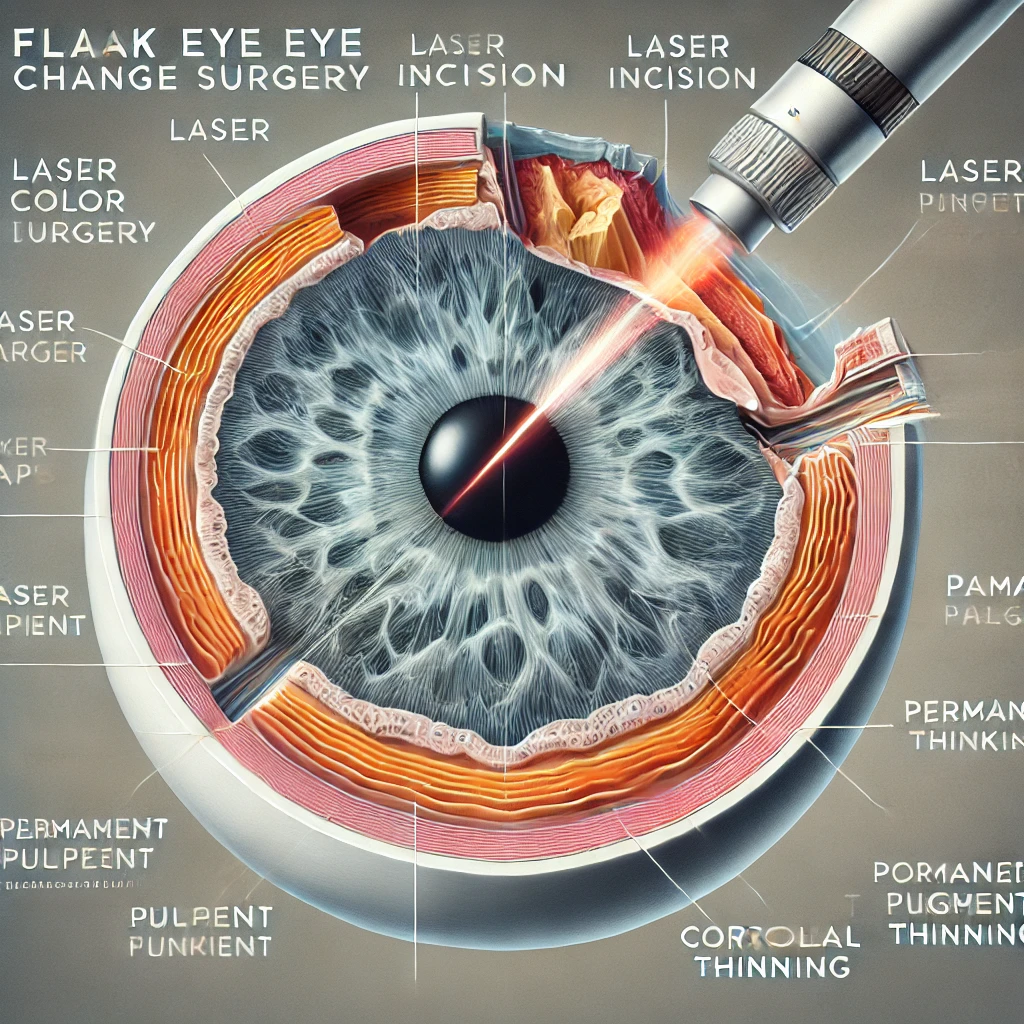Our eyes are precious. Eye tattooing should be performed for therapeutic purposes to improve the aesthetic appearance of patients with white eyes who have no possibility of vision. In these patients, eye tattooing is a method that enhances the aesthetic appearance without the need for a prosthesis that protects the eye and limbal stem cells.
In recent years, surgeries aimed at changing eye color in healthy eyes, such as keratopigmentation or FLAAK, have gained popularity. However, aesthetic eye color change surgeries carry numerous risks, including vision loss and blindness. These procedures have not been approved by the U.S. FDA, European CE, or the Turkish Ophthalmology Association (TOD).
Potential Risks of Eye Color Change Surgery (FLAAK) in Healthy Eyes
The cornea is a transparent, glass-like structure located at the front of the eye. A smooth corneal surface and its ability to transmit light are crucial for vision. In the FLAAK procedure, a healthy cornea is split into two layers using a laser to create a pocket. Permanent pigments are then injected between these corneal layers. However, both the cornea and the pigments used pose significant potential risks.
- Potential Risks Associated with the Eye Color Change Procedure:
- The cornea may be damaged during surgery, leading to blurred vision and corneal edema.
- Excessive thinning of the corneal tissue may result in corneal ectasia, causing severe visual impairment.
- Halos, light scatter, contrast loss, and reduced night vision may occur.
- Cutting corneal nerves can reduce tear production, leading to chronic dry eye syndrome.
- Like any surgical procedure, there is a risk of infection. Inflammation under the corneal flap can impair visual quality.
- Severe eye infections (such as endophthalmitis) may develop, potentially leading to blindness.
- Potential Risks Related to the Pigments Used in the Procedure:
- Various organic and inorganic permanent pigments are used in eye tattooing. Multiple complications associated with these pigments have been reported.
- Since these pigments are permanent, if the patient is dissatisfied with the new eye color, reversing the procedure or changing the color is extremely difficult.
- Each pigment has a different composition, which may lead to allergic reactions, infections, and other serious risks.
- Although these pigments are considered permanent, environmental exposure (such as sunlight) may cause color fading over time. The long-term stability of these pigments is uncertain, raising concerns about living with an unwanted eye color in the future.
- Potential Risks for Future Eye Examinations, Cataract, and Retinal Surgery:
Since the cornea loses transparency after pigment application, it does not transmit light efficiently, leading to:
- Increased difficulty in performing cataract and retinal surgeries.
- Some eye surgeries may become impossible, even with modern technology.
- Routine eye examinations may be significantly hindered.
- There is a risk of peripheral visual field restriction.
Assoc. Prof. Dr. Ömer Faruk Yılmaz, Corneal Tattoo Specialist

